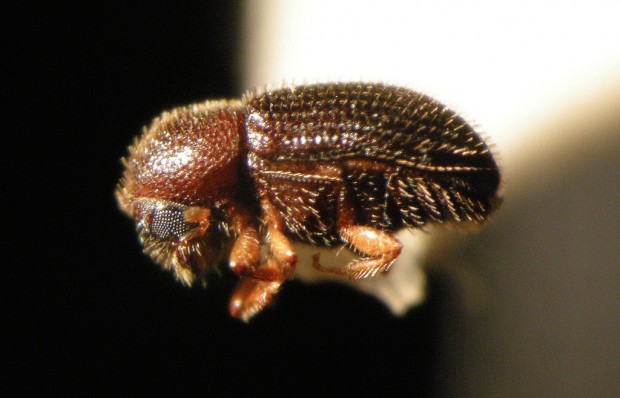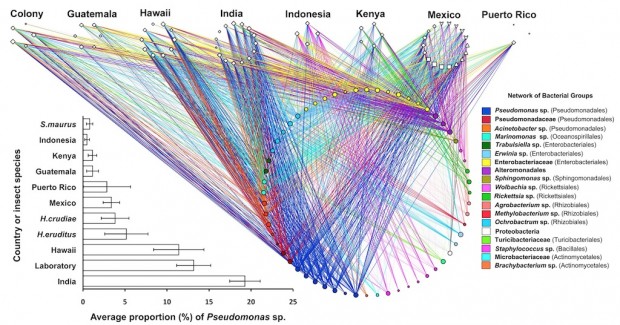Outside of certain fungi, and weather and climate themselves, the Coffee Berry Borer is perhaps the most serious natural threat to coffee production. Infestations of the coffee-dwelling pests have the potential to wipe out substantial segments of crops, year after year.
For the most recent examples, just look to Hawaii, where the fight against CBB has been ongoing since 2010, including a recent commitment of an additional $1 million from the USDA; or to Brazil, where the government last year declared a state of emergency due to CBB outbreaks in the top-producing region Minas Gerais.
Its pestilence has caused the tiny beetle to regularly be the subject of scientific study by agencies throughout much of the coffee-growing world, but new research suggests the traditional pesticides used to fight CBB may not represent the most efficient approach.
Scientists from the Berkeley (Calif.) Lab, the USDA and Mexico’s El Colegio de la Frontera Sur (ECOSUR) have been researching the caffeine detoxification capabilities of the beetles, finding 14 bacteria in the beetles’ digestive tract that help it survive what would to all other insects be toxic amounts of caffeine.
“Instead of using pesticides, perhaps we could target the coffee berry borer’s gut microbiota,” lead author Javier Ceja-Navarro of Berkeley Lab’s Earth Sciences division said in an announcement of the study, which was published today in the journal Nature Communications. “We could develop a way to disrupt the bacteria and make caffeine as toxic to this pest as it is to other insects.”
CBB are indeed the only known pests that feed exclusively on and live within coffee beans, and Berkeley Lab estimates their exposure to caffeine is the equivalent of a 150-pound human downing 500 espresso shots. The fundamental question behind the study is, “How do they survive that?”
In their research, scientists analyzed beetles from seven coffee-producing regions: Mexico, Guatemala, Puerto Rico, Hawaii, India, Indonesia and Kenya. They also studied a separate colony reared at a USDA lab, where Ceja-Navarro removed the digestive tracts from hundreds of dead beetles.
Bacterial species were isolated through an immersion method: A special medium containing caffeine acted as the main nutrient. Most of the 14 bacteria identified were found in the beetles from all seven regions, plus the USDA lab group. Said Berkeley Labs, “These bacteria appear to subsist on caffeine as their sole source of carbon and nitrogen.”
While much of the study was devoted to identifying these microbes within the digestive systems, the research did include some testing of beetles that were given a four-week diet of antibiotics that eliminated the culturable microorganisms. After going off antibiotics and being allowed to freely feed on coffee, the beetles demonstrated a significant decrease in their ability to breed and grow, with approximately a 95 percent decline in eggs and larvae relative to control insects, and no progression to pupa or the adult stage over the 44-day experiment.
These findings suggested to the research team that discovering means to eliminate these caffeine-processing microorganisms in the pest’s gut could lead to significantly more impactful and more environmentally friendly control over their ability to breed.
The complete study is available here.
Nick Brown
Nick Brown is the editor of Daily Coffee News by Roast Magazine.
Comment
4 Comments
Comments are closed.








he question is when will a commercial producto for producers be available?
Here’s a link to a related Berkeley Lab Video on the coffee berry borer – https://youtu.be/cWuAK6IMRQM
CBB stikes Papua New Guinea just in the begining of 2017. Local Farmers are struggling. Papua New Guinea Department of Agriculture funding PNG Coffee Industry Corporation 50 million Kina to fight H.hampei. I am Agriculture student at PNG University of technology. Interest in studying Coffee.
Thorough research, keep it up